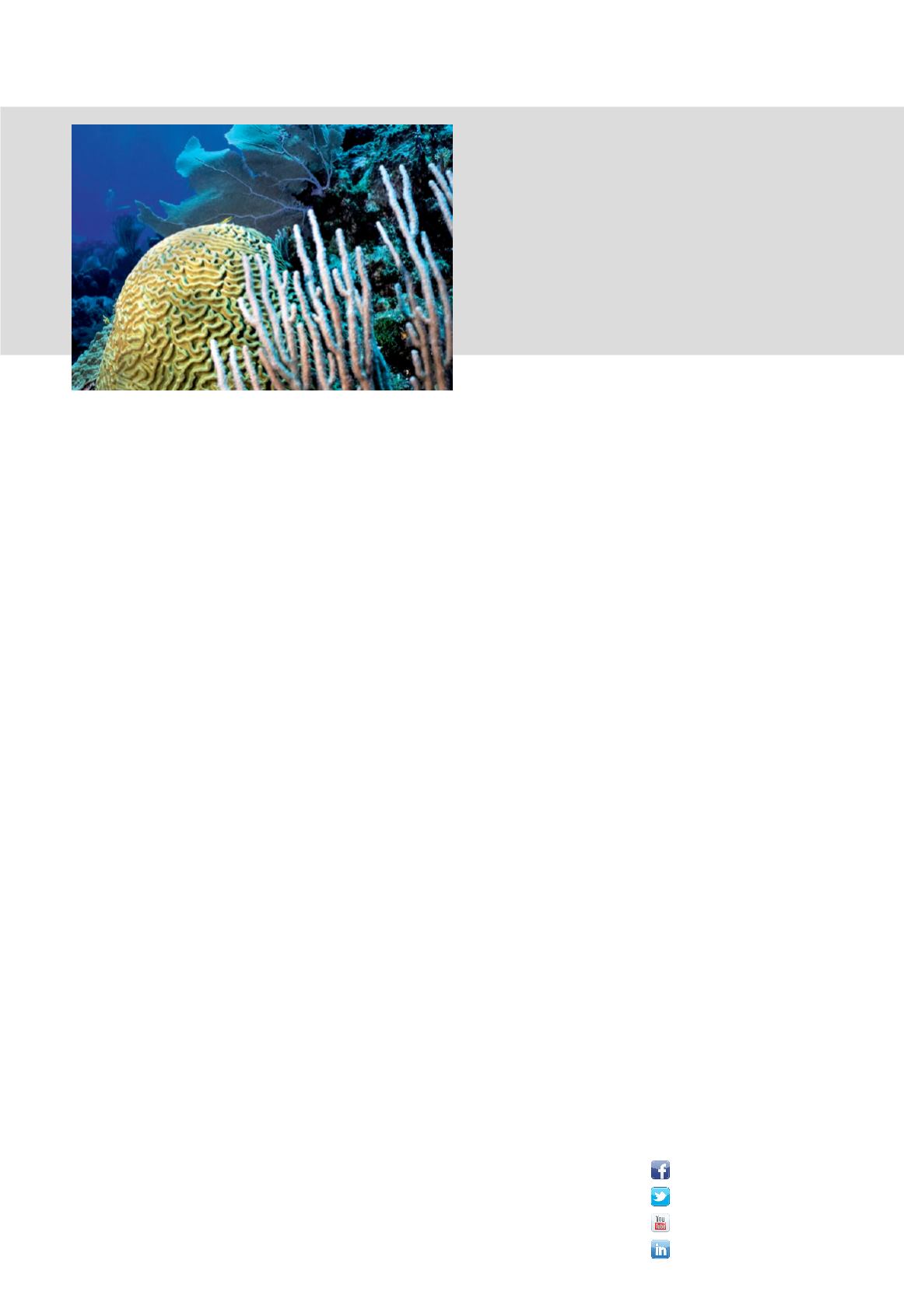

Great Britain
Festo Ltd
Applied Automation Centre
Caswell Road
Brackmills Trading Estate
Northampton
NN4 7PY
Phone
+44 (0) 800 626422
Fax +44 (0) 1252 775015
Ireland
Festo Ltd
Unit 5
Sandyford Park
Sandyford Industrial Estate
Dublin 18
Phone
+353 (0) 1 2954955
Fax
+353 (0) 1 2955680
About the magazine
All images, graphics and texts are
protected by copyright law or
other intellectual property rights.
Any reproduction, modification or
use in other print or electronic
publications is prohibited without
the express consent of Festo AG &
Co. KG.
Fascinating underwater world
Coral reefs are called the rainforests of the sea because of their
diversity, colours and shapes as well as their inhabitants. With
6,500 different species, they are the most diverse group of the
so-called coelenterates. Their variety of colours and shapes is
reflected in the scientific name “Anthozoa”, which literally means
“flower animals”. In addition to being biodiverse, coral reefs
provide new habitats for many marine animals. The world’s largest
coral reef, the Great Barrier Reef, located off Australia’s northeast
coast, is home to around 5,000 species of mollusc, 1,500 species
of fish and 1,500 species of sponge as well as 800 species of
echinoderm.
The Caribbean brain coral (pictured above and on the cover)
certainly lives up to its name. Its incredible diversity makes it not
only fascinating to divers, but also something of a scientific
enigma. Even specimens from the same coral colony appear to
have different shapes and colours, as the photo taken by Evan
D’Alessandro shows. Whether they are genetically identical
despite their different appearance and the reason why they take
on another shape despite being in the same habitat remains a
mystery.
Foto: © Shotshop.com
















